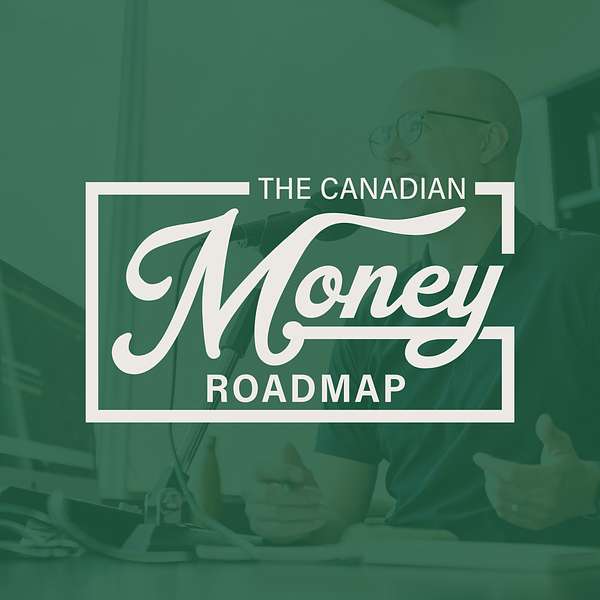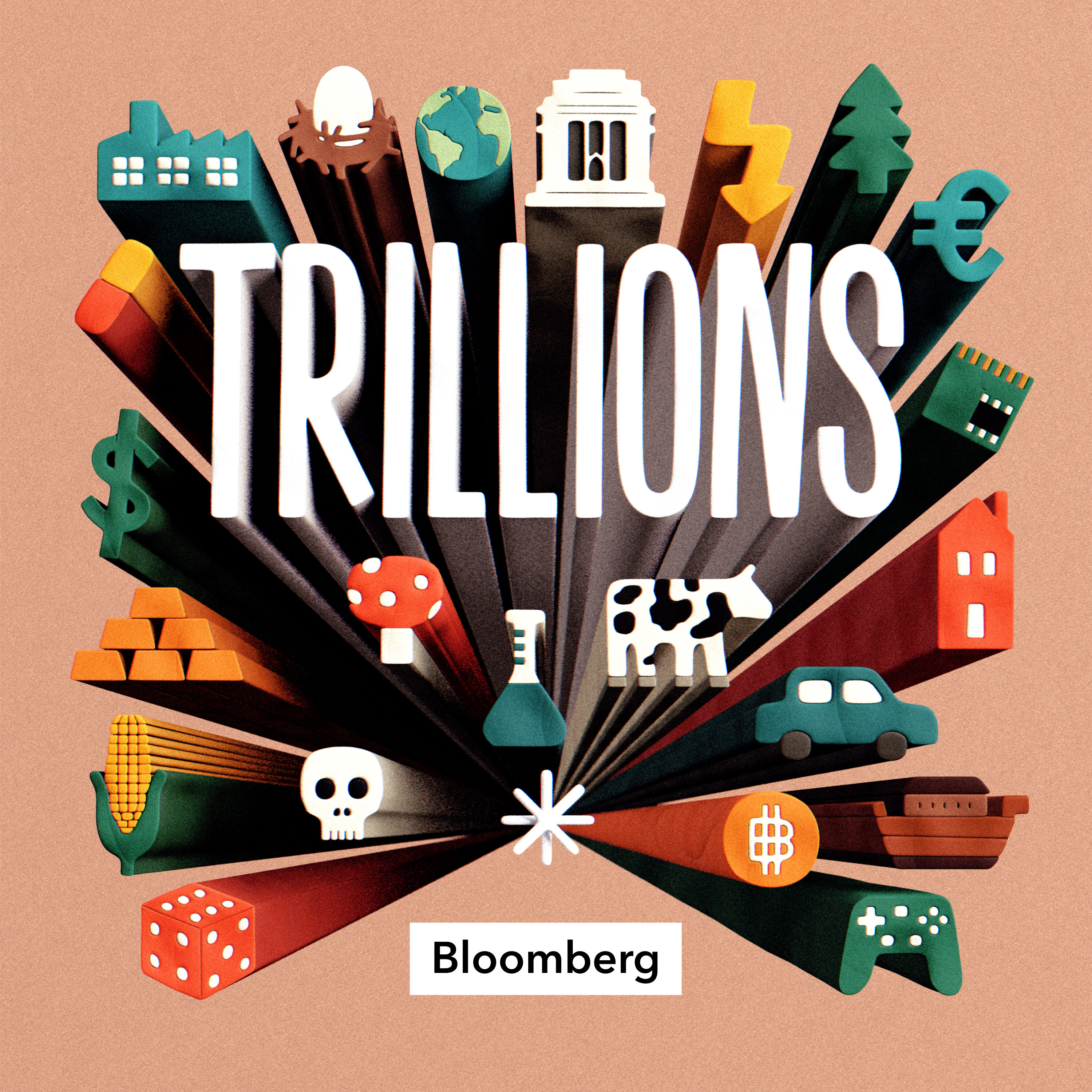
The Canadian Money Roadmap
Invest smarter, master your money, live & give more
The Canadian Money Roadmap
Are ETF's safe?
In this episode I will discuss the ideas of "safe" investments and how risk can be viewed differently depending on your perspective.
🌳 Connect with Evan and Cedar Point Wealth | Services and Pricing
🗣️ I want to hear from you! Record your comment or question here and you could be featured on an upcoming episode of the podcast
✨ Get your money organized - Your Full Financial Picture Spreadsheet
Hello and welcome back to the Canadian Money Roadmap podcast. I'm your host, evan Newfeld. On today's episode, I'm going to be feeling a question that I've gotten a few different formats, but just around the idea of ETFs and whether they are safe. Thanks so much for joining me today. I've been away on a bit of vacation and I seem to record a bunch of podcasts in a big chunk before I left, and so it feels like I haven't been on the mic for a long time, so shaking the rest off, and it's good to be back. While I was away, I received an email from somebody who was asking some questions about wanting to help their kids with investing, and the thing that they were asking about was what's the best way to do it? And the thing that they were asking about was what are some ETFs that I could recommend that are safe for someone to get started with investing? Then the other day I was on the Blossom app. I'm not sure if any of you are familiar with that, but it's a Canadian investing app, kind of like a social media kind of thing and just like browsing on there, kind of seeing what people are talking about, and I saw someone who self-identified as a new investor looking for recommendations for things to invest in, and they specifically said that they were looking for a low risk investment. I would say ie safe, like my previous emailer, and they're looking for low risk investment recommendation. And someone in the comments they're very confidently recommended a very popular ETF that is 100% stocks. I thought, hmm, this is interesting. So, first things first, to ever emailed, I'm forgetting your name and I couldn't find the email in my records, but thanks for your email and everything here is coming from a good place, especially for someone that's wanting to get started. These are people that are actively wanting to not make dumb decisions. Okay, so this is a great place to start. However, there is a good chance that there is a little bit of misunderstanding about some what I would think are foundational topics related to investing that we need to cover off, perhaps here on the episode today. That would help one understand the idea of risk a little bit better. Risk and safety we'll say those are obsidenced for, without getting into, maybe, the semantics of what each of them really mean, but yeah, so we're going to talk about that today and whether maybe ETFs because those came up in both of those comments are safe in and of themselves. So in this episode I'm going to talk a little bit more about risk, define a few different versions of it, and then we can talk about whether an investment approach is actually appropriate for someone that's looking to avoid that type of risk. So let's get started. First things first. I need to yell from the absolute rooftops and I'm going to do another episode on this again but ETFs in and of themselves are not an investment strategy. They are an investment structure. There are thousands and thousands of ETFs that are doing all sorts of different things, lots of them crazy, and so many people incorrectly all capitals incorrectly believe that ETFs are all low-cost, passive investments with no risk. No, no, no, no, no, no. They are simply a structure that allows for a group of investments to be bundled together and sold as a group so that way people can get exposure to the stock market without having to pick stocks and things like that. But many popular ETFs are not passive, low-cost, low-risk, anything like this. They're potentially the opposite. So the ETF does not define how safe an investment philosophy is or anything like that. Like there are individual stock ETFs that own, say, tesla shares and they'll add leverage to them, so it's like a two times Tesla ETF. It's crazy things, right. So to speak about ETFs as a group, I think is inappropriate, because it also doesn't make sense. It's just a structure. Mutual funds exactly the same way. They're just a structure. Many people don't like mutual funds because they think they are high-cost active investments with lots of risk and compensation structures that are working in favor of advisors only and all these kind of things it's like also. Yes, those can be true, but there are mutual funds that are low-cost, passive, no compensation baked in, right, they're just vehicles. Okay, you just need to understand that. The ETF does not define the strategy, same as a mutual fund does not define the strategy. So, anyways, let's get that out of the way. So now let's go back to talking about risk and safety a little bit more, and I have three different definitions of risk that we'll talk about today. There's 101 that we could talk about. If you really wanted to get granular with that kind of conversation, I don't think that's worth your time that much. So we'll just go over these three big ones here, and I think that'll be a bit more interesting. So one way that you could define risk as an investing concept is the risk that you actually lose everything. You invest $100 and you lose $100. Now you're left with zero. This idea comes from the concept of idiosyncratic risk, which is the risk that's present in a specific asset or a specific group of assets. So you can think of an individual stock. A company like Enron, for example, turns out they're highly fraudulent and they went to zero. They were a massive, massive company and now they went to zero. So if you had all of your money in Enron stock, you have nothing left. So that is the risk of losing everything. So when you own an individual stock, it doesn't mean they have to be a fraudulent company, but companies go bankrupt all the time. Owning one individual stock has that risk of you losing absolutely everything. The same risk when it comes to crypto, individual bonds, options trading, of course, and all sorts of things. You can lose everything doing that. But when it comes to the stock market anyways, the permanent loss of capital and that idiosyncratic risk that's present in any one company or any group of companies. In theory, that can be diversified away. So I would also just hop in and say be careful what you perceive to be diversification, because it's like okay, well, I'm going to own all of the video stores and not just blockbuster. Well, turns out, when all video stores go bankrupt, owning them all doesn't matter. That could happen in any number of things and we're going to be shocked 50 years from now going back and seeing all the things that we thought were good ideas and now no longer exist. Okay, so diversification goes across countries, it goes across industries, and so true diversification really matters for eliminating that idiosyncratic risk. So back to that ETF conversation. Could you lose everything within ETF? Back to my original point yes, because there are ETFs that own individual stocks, like I said, which are crazy. There's ETFs that are sector specific, which might lose blockbuster example there that could be present there. There are ETFs that are country specific and we've seen that in the past when whole countries have their stock market essentially go to zero. It doesn't happen all the time and this isn't a boogeyman type podcast and say, oh, you're going to be worried about that, but things can happen that are present locally in any one country, and so no. So the ETF structure, of course, like I said before, does not protect you from idiosyncratic risk, but their investment strategies that you can have in an ETF that are so globally diverse. So I portfolio stocks. My perspective is reasonably safe quote unquote from the complete and permanent laws of your entire investment. And so, yeah, you can find that in ETF, you can find that in mutual funds, or you could build a ridiculously complicated portfolio of individual stocks. Please don't do that, but it is totally possible. So that is my first definition of risk there, that is, risk of losing everything. Number two, risk of the price declining, and so this is probably the more traditional view of investment risk. And if you own ETFs or mutual funds, you can look up something called the Fun Facts or the ETF Facts and there will be a risk rating on there. It'll say low, low, medium, medium, medium, high or high. It's kind of like this five point scale that we use here in Canada. I think the US is probably similar, but this scale is based on the idea of price volatility, or how much that price is gonna be bouncing around. So we often use that term of volatility to describe how much a price will move or has moved historically. Of course, no one knows what it's gonna do in the future, but historically we can kind of look back and see what it has been, and you could use something called standard deviation, which looks at the average and then it takes a look at how much it moves beyond that average over a given period of time. And so if you're looking at Morningstar or anything like that, that shows a standard deviation of investment that essentially, the higher that number is, the more bouncy the price is gonna be Bouncy again, let's be clear. That means that it will go down at some point. I'm gonna come back to that. But any investment that has a positive expected return over the risk free rate of, say, cash and right now you can get a decent interest rate on cash so any investment that has an expected return higher than that will have some price volatility. So in this case, if your view of low risk or safe quote unquote means that the price won't ever go down, you will be disappointed if you are owning stocks or bonds or something like that. So back to the person who is posting on Blossom, and this person is brand new to investing and they're saying I want something that's low risk. I'm thinking that person probably has this view of risk, meaning what's something that I can go in, that the price isn't gonna bounce around too much. And so the person that suggested that a portfolio of stocks is low risk. It might be true from the first standpoint of it might not go to absolute zero, but boy it is going to be bouncy for sure. So I see this all the time like you look on Reddit or places like Blossom or Twitter or whatever it's like. Should I fire my advisor? Did I buy a bad investment Because the price had recently gone down? And I guess the answer to those could definitely be yes. But it's more likely that you thought you can make money without it ever declining in value. So hear me out here that I promise you. If you have a fund or ETF involving stocks or bonds or real estate or commodities or even gold, you will see it decline in value at some point. So back to the original question. If you view risk as a decline in price or the volatility of the price of investment, that's something safe in that instance, or that definition would be cash. Something low risk on the volatility scale would maybe be something like investment grade bonds, but even those can decline in value and have as recently as 2022. So if risk Equals volatility in your definition or multiple definitions, and all stock ETF is objectively not low risk. So my gripe with that person's comment was that he was thinking, okay, what is low risk in terms of losing absolutely everything? It's like, yes, globally diversified portfolio stocks has a very low likelihood of going to absolute zero and if it does, we've got bigger problems. But that person who's brand new to investing is probably seeing volatility as their main definition of risk, until they get their feet when they understand, kind of, how this thing works and they have a couple of years that don't look as Pretty and they sit through it and all that kind of stuff. So for now, to Recommend someone who's brand new to investing, looking for something that's low risk, it's an all-stock portfolio, I think that's shameful and wildly inappropriate, even though it might be a good option for that person, especially if they're a DIY investor that's just getting started, that's never done anything before. They will have a different expectation. You said I should buy this low-risk ETF and it went down 20% last year. It's like, hmm, we need to get on the same page on defining risk and safety. So that was number two risk of the price declining or Volatility. The third one is a little bit more Creative in the definition, I guess, because it'll be a bit more unique for you. So it'll be the risk of not actually reaching your goals. So those were. I'm gonna speak a little bit more generally because we could talk about a million things here, but the main idea is that if you need your portfolio to work on your behalf Because you can't simply save enough under your own mattress to make it work on your own, I would say this is the vast majority of people. It is quite common that the real risk for someone's investment portfolio is actually being too conservative over too long a period of time. So there have been some recent studies done on this that have shown the greatest asset values at retirement and death have all come from all stock portfolios and including bonds in there actually, on average, decreases those values at those two periods of time at retirement and at death, so even throughout the retirement income cycle. But keep in mind that these studies are done with data and and you can think of them as just robots and not real people who make good decisions and bad decisions and whatever. But all that to say, we're just saying that stocks provide a higher expected return. So one can also expect that in the vast majority of cases, the longer you hold a portfolio With assets holding higher expected returns, you're actually gonna realize higher returns. This isn't rocket science here, but the challenge with this risk is that if you get too hung up on the previous one, you get too hung up on the idea that I don't want the price to go down. I don't want the price to go down, and so I'm gonna hold a reasonably conservative portfolio. The odds of the upside on the other end not coming to fruition are actually really good, right. So this is the risk of not actually reaching your goals by not having enough Investment risk to get enough positive expected return to make up the difference. I work with some clients that have ridiculously high savings rates because they are Very conservative people and they can't stomach a lot of volatility in the price. That's okay, but you have to make it up with your own savings rate. You can't have both. You can't have a very high Return, especially not an expected return, without any chance of the price declining in value, right. So the challenge becomes Optimizing for all three of these things at the same time, which you can't right. You can optimize for number one and number three reasonably well, meaning you can diversify to avoid that idiosyncratic risk, and and you can have a high likelihood of reaching your goals by taking on enough investment risk and making up the return over a long Enough period of time. But the second one kind of stands on its own. So a huge misconception that people have with investing is that it'll never go down and there will never be long periods of time where you're down From your original investment. Otherwise it's an advisor's fault or there's too many fees or you know whatever it's like. No expectations are usually usually the problem and an understanding of what is actually going on in the world. So, as we record today, many people's two-year returns, and balance funds in particular, are barely positive. We're still coming out of the returns that that were quite negative over almost every single asset class in 2022. So many, many people have very low returns over the last two years. And these are all sound, prudent strategies with low fees in Do it yourself and investors whatever. No need to fire an advisor. Get all worked up. It is normal. It sucks, but it's normal, right. So when we're building portfolios, we have to have a good understanding of what type of risks you're trying to avoid and, in my estimation, pairing the optimization of number one and number three together is prudent portfolio building. It's okay to be a conservative investor, but then it just adds on a few more wrinkles and a little bit more discipline required on your own to be able to make up the difference between the expected returns and how much you can actually save. So let's review our ETF safe. This is the original question. I don't know how much time I spent on that, but if ETFs are a structure, so the investments that a specific ETF holds will define what risks it is exposed to and then how quote unquote safe it is as a result. Now, if we define a risk as the opposite of safe, I guess you have first, one that you lose everything. Second, one that the price goes down. And three, that you don't achieve your goals. So to achieve your goals, you'll likely need to own something that will go down at some point, which seems backwards, but that is kind of a core philosophy or a core feature of investing. It's, it's, you know, it's a feature, not a bug kind of thing, and this is the whole idea of there's no such thing as a free lunch, and to have any sort of reward you need to take on some risk, and that is the risk. So an ETF that is safe from the perspective of not losing everything will still have the risk of the price going down for perhaps an extended period of time, and an ETF that is safe from their perspective of not going down in price now has the risk of not you not achieving your goals at all. So if I were to answer that original email or is like what can I recommend to someone that is safe, I would say we are at the beginning of the conversation, not the end, and so, from my perspective, as someone who is a financial planner and investment advisor, the product recommendation that I give to people comes at the very end of the conversation, not at the beginning, because the beginning of the conversation defines everything around your objectives, your financial situation, your experience with investing, your knowledge around investing, what your timeline is, everything else about your financial situation entirely. Those will help shape your understanding of risk and safety and it'll help shape my recommendation for someone who's in a situation like that. So I can't answer that this is, this is a classic industry where it's like the best answer is always it depends, and that is true because this is personal finance, after all, and let's keep it personal, and so hopefully this conversation around risk and safety is helpful for you, and if you are wanting to see what it looks like to work with someone on your investment portfolio, feel free to reach out to me at podcast at evannewfieldcom, and I will connect you with someone on our team so you can see what it looks like to work with an advisor on a low cost, evidence based strategy that is actually appropriate for your situation. Thanks so much for listening to the podcast today and we will see you next week. Thanks for listening to this episode of the Canadian money roadmap podcast. Any rates of return or investments discussed are historical or hypothetical and are intended to be used for educational purposes only. You should always consult with your financial, legal and tax advisors before making changes to your financial plan. Evan Newfield is a certified financial planner and registered investment fund advisor. Mutual funds and ETFs are provided by Sterling Mutuals Inc.
Podcasts we love
Check out these other fine podcasts recommended by us, not an algorithm.

The Rational Reminder Podcast
Benjamin Felix, Cameron Passmore, and Dan Bortolotti
Animal Spirits Podcast
The Compound
The Intelligence from The Economist
The Economist
The Compound and Friends
The Compound
Trillions
Bloomberg
The Journal.
The Wall Street Journal & Spotify Studios
Standard Deviations with Dr. Daniel Crosby
Dr. Daniel Crosby
